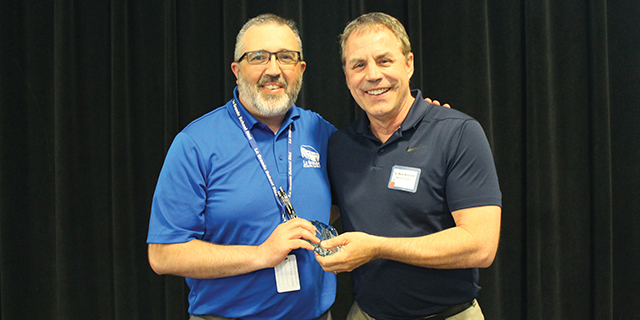Few Oregonians will benefit from clean energy rebates
Published 9:00 am Tuesday, November 28, 2023

- Lisa Sims sits with her dog as Jim Balderas with the nonprofit Verde talks about the installation of a ductless heat pump inside Sims’ home at the Arbor Mobile Park in Northeast Portland. Only about 13,000 Oregon households, most of them low and moderate-income, will likely benefit from the federal home electrification and efficiency rebates that will become available next year for heat pumps, electric appliances and home efficiency upgrades.
PORTLAND — Just 13,000 Oregon households will likely benefit from the much-awaited federal home electrification and efficiency rebates that will become available next year, according to a new estimate from the Oregon Department of Energy.
That’s less than 1% of Oregon’s 1.7 million households. State officials say more or fewer households could be eligible depending on who applies for what type of rebate.
The rebates, part of the mammoth Inflation Reduction Act approved last year, are meant to reduce greenhouse gas emissions by helping lower-income residents install a heat pump system, switch to an electric stove or improve a home’s insulation, among other things. Interest in heat pumps has recently soared, but prices are prohibitive to many.
Oregon is poised to receive $113 million for the rebates program. While that sum may seem large, the rebates will be generous so they can cover a larger portion of the upfront costs, making heat pumps, appliances and home retrofit projects more affordable.
State officials acknowledge the number of people who will benefit is low. That’s because the larger rebates limit the number of people overall that are likely to receive them, said department spokeswoman Jennifer Kalez.
The state is required to ensure that at least 40% of all the rebates go to low-income households, including people from marginalized communities, and 10% additionally are available to low-income multifamily rental households — though Oregon can increase those percentages.
“What’s great is that … they are designed to reach more disadvantaged and low-income communities and help expand access to energy-efficiency improvements that may otherwise be out of reach,” Kalez told The Oregonian/OregonLive.com.
Since the rebates will benefit few households, state officials are encouraging people to instead apply for a 30% federal tax credit — available today to everyone regardless of income — for energy-efficient home improvements, including insulation, heat pumps and windows and residential clean energy projects such as solar, wind and battery storage. A tax credit is an amount people can deduct from their tax returns to reduce the income tax they owe.
People can get up to a $2,000 tax credit for a heat pump or a heat-pump water heater. Homeowners are also eligible for a tax credit of up to $1,200 for insulation, windows and exterior doors, electric panels and even an energy audit. In total, a person can claim up to $3,200 under the energy-efficiency tax credits every year for the next 10 years — because the credits renew annually and are available for products bought and installed until December 2032.
Households also can receive small financial incentives from the Energy Trust of Oregon and local utility companies. The amounts vary depending on a resident’s income, what heating source they’re switching from and whether they are a homeowner or a landlord. And some low-income Portland residents can qualify for a free heat pump and home energy retrofit via funding from the Portland Clean Energy Fund.
Those who can’t afford the upfront costs or don’t have much tax liability to benefit from tax credits will have to wait until mid-2024 when the rebates become available. Based on federal guidance, the state is currently working to develop the rebate program and create rules to administer it.
The program will include two types of rebates, most of which will likely not be retroactive. One will provide rebates of $2,000 to $4,000 for energy-efficiency upgrades for individual households and multifamily buildings. They will be available regardless of income, though a percentage of the rebates must go to lower-income households.
The upgrades can include installing more efficient equipment such as a heat pump or water heater, weatherization measures such as insulation and air sealing, devices such as smart thermostats, with higher incentives available for lower-income households and projects that lead to higher energy savings.
The other initiative will provide upfront point-of-sale rebates via a retailer or contractor to low- and moderate-income households for the installation of high-efficiency electric appliances and electric upgrades, along with insulation and air sealing measures.
Low and moderate-income households will be eligible for up to $14,000 in rebates to switch over to electric appliances, including up to $8,000 for a heat pump, which provides heating, air conditioning and hot water. The discount can cover up to 100% of project costs, including purchase and installation, for low-income households and up to 50% of costs for moderate-income households.
It’s still unclear whether the rebates will be available first-come, first-served or if other rules will guide the process, Kalez said.
Oregonians can sign up for email updates on the state’s progress in developing the rebate program.





